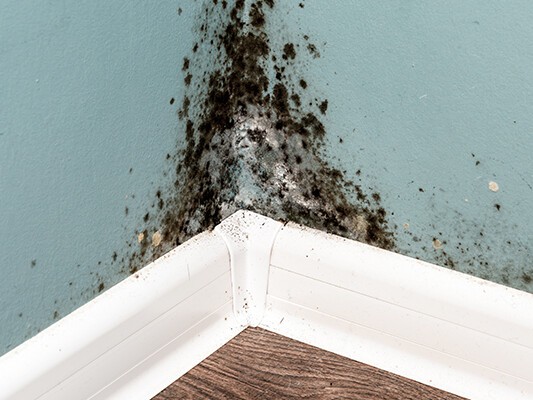In recent years, there has been increasing concern about indoor air quality (IAQ) and its impact on health and well-being.
Mold is a common indoor air pollutant that can cause a range of health issues, including allergies, respiratory problems, and exacerbation of asthma symptoms.
Indoor air quality monitors have become popular tools for assessing IAQ levels, but can they effectively detect mold?
Mold! What is it?
In April 2016, the German Society of Hygiene, Environmental Medicine, and Preventative Medicine (GHUP) released an AWMF guideline on ‘Medical diagnostics for indoor mold exposure.
released an AWMF guideline on ‘Medical diagnostics for indoor mold exposure.
Emphasizing potential health risks like respiratory issues and allergic reactions, affecting 3–10% of the European population.
Exposure to mold spores can lead to allergic reactions, respiratory irritation, and other health issues, particularly in individuals with allergies or asthma.
Growth Conditions:
Mold’s proliferation is notably favored in environments having high humidity levels and inadequate ventilation.
Areas prone to dampness , such as bathrooms, basements, and kitchens, serve as ideal breeding grounds for mold.
, such as bathrooms, basements, and kitchens, serve as ideal breeding grounds for mold.
Additionally, water leaks, flooding incidents, or condensation issues can exacerbate mold growth, providing favorable conditions for its colonization.
Health Implications:
Exposure to mold and its spores can elicit a spectrum of health repercussions , particularly for people predisposed to allergies or respiratory conditions.
, particularly for people predisposed to allergies or respiratory conditions.
Allergic reactions, including nasal congestion, coughing, sneezing, and skin irritation, are frequently reported upon exposure to mold.
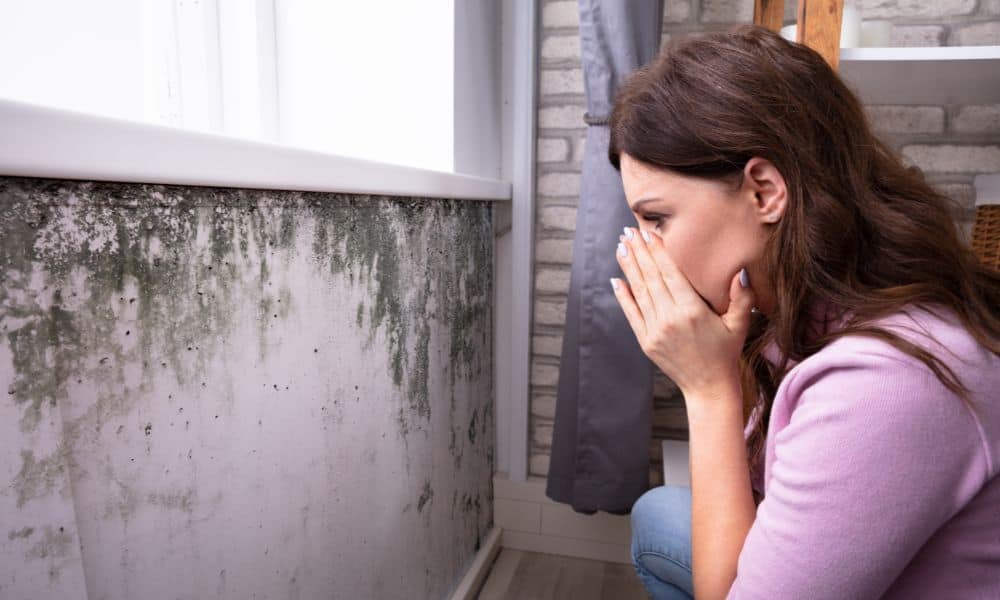
Moreover, people with asthma may experience exacerbated symptoms, such as wheezing, chest tightness, and breathing difficulties.
In severe cases, prolonged exposure to certain molds, such as Stachybotrys chartarum (commonly known as black mold ), may contribute to the development of respiratory infections and other systemic health issues.
), may contribute to the development of respiratory infections and other systemic health issues.
Common Indoor Molds:
Several species of mold are commonly encountered in indoor environments, each with its unique characteristics and potential health implications.
are commonly encountered in indoor environments, each with its unique characteristics and potential health implications.
Among the prevalent indoor molds are Aspergillus, Penicillium, and Stachybotrys.
Aspergillus and Penicillium species are frequently implicated in indoor mold contamination, often associated with water-damaged building materials and organic debris.
Stachybotrys, colloquially referred to as black mold due to its dark appearance, has garnered attention for its potential to produce mycotoxins, compounds that may pose health risks upon inhalation or dermal exposure.
| Mold Type | Size Range | Common Indoor Habitat | Health Effects | Detection Method |
|---|---|---|---|---|
| Aspergillus | 2 - 5 micrometers | Damp or water-damaged areas such as bathrooms and kitchens | Allergic reactions, respiratory issues | Elevated humidity levels detected by IAQ monitors can create conditions conducive to Aspergillus growth. Some species of Aspergillus may also contribute to particulate matter in the air. |
| Penicillium | 2.5 - 4 micrometers | Damp indoor environments, including walls, ceilings, and air ducts | Allergic reactions, respiratory issues | Like Aspergillus, Penicillium thrives in moist environments. IAQ monitors can detect elevated humidity levels associated with Penicillium growth. |
| Cladosporium | 2 - 10 micrometers | Often found on damp surfaces such as carpets, wallpaper, and HVAC systems | Allergic reactions, asthma exacerbation | Cladosporium spores are commonly found indoors and can become airborne. IAQ monitors with particulate matter sensors can indirectly detect Cladosporium spores present in the air. |
| Alternaria | 5 - 10 micrometers | Damp areas such as bathrooms, kitchens, and basements | Allergic reactions, asthma symptoms | Alternaria spores are commonly found in indoor environments, especially in damp areas. IAQ monitors can indirectly detect Alternaria by measuring particulate matter concentrations. |
| Stachybotrys (Black Mold) | 5 - 20 micrometers | Areas with prolonged moisture exposure, such as water-damaged drywall or wood | Respiratory issues, neurological symptoms | Stachybotrys chartarum, commonly known as black mold, may release spores into the air. IAQ monitors with particulate matter sensors can indirectly detect Stachybotrys spores present in the air. |
| Fusarium | 2 - 30 micrometers | Water-damaged buildings, particularly in damp carpeting, wallpaper, and insulation | Allergic reactions, eye irritation | Fusarium species are commonly found in indoor environments, particularly in water-damaged buildings. IAQ monitors can indirectly detect Fusarium spores by measuring humidity levels and particulate matter concentrations. |
Can Indoor Air Quality Monitors Detect Mold?
Indoor air quality monitors can detect mold indirectly by measuring factors such as particulate matter, humidity levels, temperature, and volatile organic compounds (VOCs) which can indicate its presence. However, specialized testing may be required for precise identification and assessment of mold growth.
Mold detection typically involves specialized sampling and analysis techniques conducted by trained professionals, such as air sampling or surface sampling, followed by laboratory analysis to identify and quantify mold species present in the environment.
While some indoor air quality monitors may incorporate sensors capable of detecting particles or allergens that could indicate the presence of mold, such as fungal spores or fragments, these monitors are not specifically tailored for mold detection.
However, certain indicators measured by indoor air quality monitors, such as elevated humidity levels or increased particulate matter concentrations, may suggest conditions conducive to mold growth.
Additionally, persistent odors or visual signs of water damage, such as discoloration or mold growth on surfaces, can prompt further investigation for potential mold contamination.
Factors Affecting Mold Detection:
Mold detection by indoor air quality monitors is influenced by various factors, encompassing sensor technology, sensitivity, specificity, and environmental conditions.
Understanding these factors is crucial for interpreting monitoring data accurately and effectively managing indoor air quality.
Sensor Technology:
The type of sensors integrated into indoor air quality monitors significantly impacts their ability to detect mold.
While some monitors may incorporate particle sensors capable of detecting airborne particles , including mold spores or fragments, these sensors may not specifically identify mold.
, including mold spores or fragments, these sensors may not specifically identify mold.
It’s essential to recognize that most indoor air quality monitors are not explicitly designed for mold detection but rather for measuring general IAQ parameters such as particulate matter, volatile organic compounds (VOCs), and humidity.
Sensitivity and Specificity:
The sensitivity and specificity of sensors employed in indoor air quality monitors are critical factors determining their mold detection capabilities.
High sensitivity enables sensors to detect low concentrations of airborne particles, while high specificity ensures accurate identification of specific particle types, such as mold spores.
Achieving both high sensitivity and specificity poses challenges for indoor air quality monitors, as it requires sensor technologies capable of discerning between various particle types with precision.
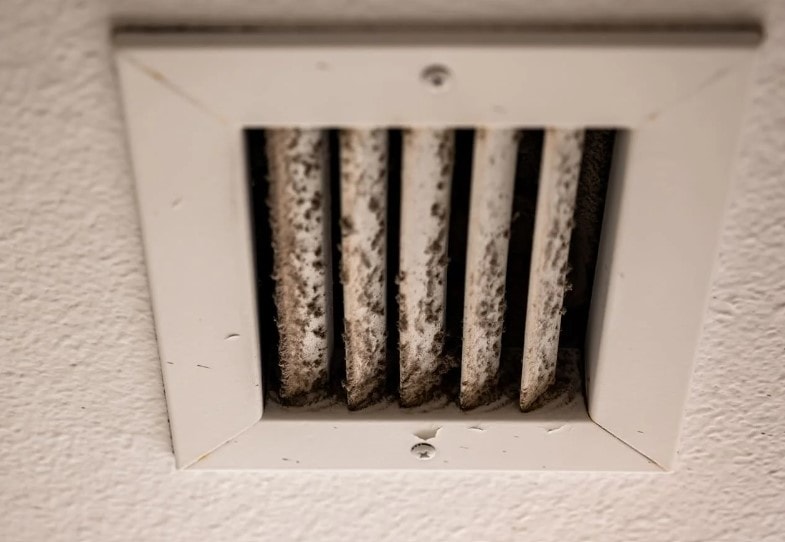
Environmental Conditions:
Environmental factors exert a profound influence on mold growth and the dispersal of mold spores in indoor air.
Parameters such as humidity levels, temperature, air flow patterns, and the presence of other pollutants profoundly impact mold detection.
profoundly impact mold detection.
Elevated humidity levels, for instance, can foster mold growth, leading to increased concentrations of airborne mold spores.
Furthermore, mold growth may occur in concealed or inaccessible areas, posing challenges for monitors reliant on sampling air from open spaces.
Direct sampling or inspection of suspected mold growth areas may be necessary to complement monitoring efforts effectively.
How do you get rid of mold in your home?
Getting rid of mold in your home involves several steps to effectively remove existing mold growth, address underlying moisture issues, and prevent future mold growth.
Here’s a step-by-step guide on how to get rid of mold in your home:
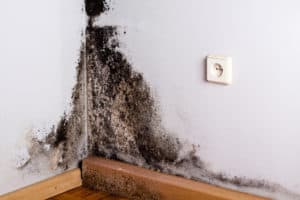
Identify and Locate Mold:
Inspect your home thoroughly to identify areas affected by mold growth. Common areas where mold may thrive include bathrooms, kitchens, basements, attics, crawl spaces, and areas with water leaks or high humidity levels.
Wear Protective Gear:
Before proceeding with mold removal, wear protective gear, including gloves, goggles, and a respiratory mask, to avoid direct contact with mold spores and minimize exposure to airborne contaminants.
Remove Mold-Infested Materials:
Remove and discard porous materials contaminated with mold growth, such as moldy drywall, carpeting, insulation, and upholstery. Seal the contaminated materials in plastic bags to prevent the spread of mold spores and dispose of them properly according to local regulations.
Clean and Disinfect Surfaces:
Thoroughly clean non-porous surfaces affected by mold growth using a solution of water and detergent or a commercial mold cleaner. Scrub the surfaces with a brush or sponge to remove mold spores, dirt, and stains. Rinse the surfaces with clean water and allow them to dry completely.
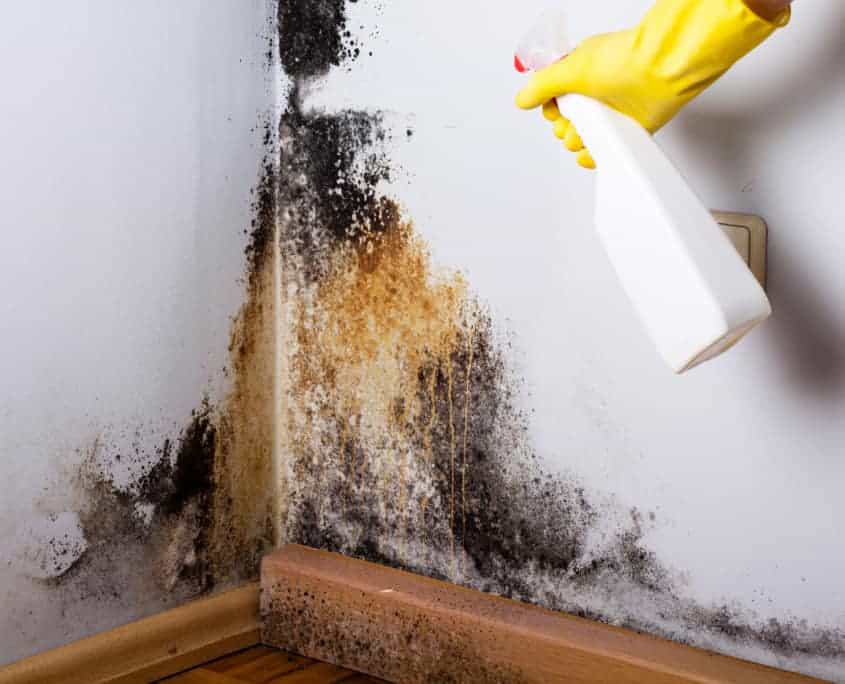
Use Mold Remediation Products:
Consider using mold remediation products such as hydrogen peroxide, vinegar, baking soda, or commercial mold cleaners formulated specifically for killing and inhibiting mold growth. Follow the manufacturer’s instructions for application and safety precautions.
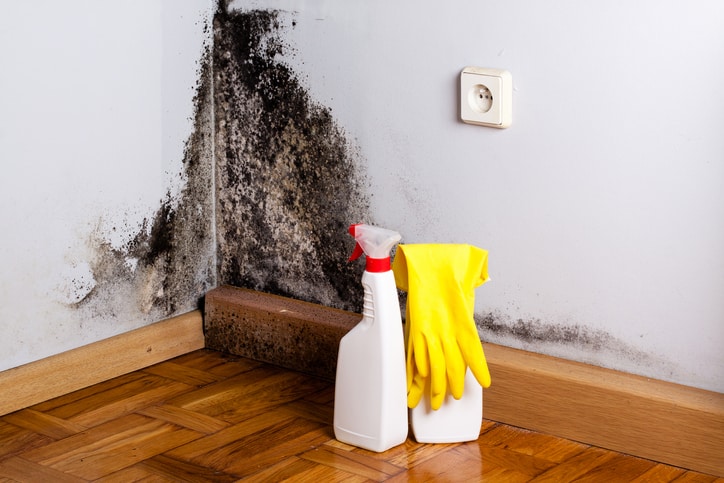
Address Moisture Issues:
Identify and address underlying moisture issues that contribute to mold growth, such as water leaks, plumbing leaks, roof leaks, condensation, or high humidity levels. Repair leaks, improve ventilation, and use dehumidifiers to reduce indoor humidity levels and prevent moisture buildup.
Dry and Ventilate:
Thoroughly dry wet or damp areas affected by mold growth using fans, dehumidifiers, or natural ventilation. Ensure proper airflow and ventilation in bathrooms, kitchens, basements, and other areas prone to moisture accumulation to prevent mold growth.
Monitor and Prevent:
Regularly inspect your home for signs of mold growth and address any moisture problems promptly. Keep indoor humidity levels below 60% to discourage mold growth and maintain proper ventilation in all areas of your home. Use exhaust fans in bathrooms and kitchens, vent clothes dryers to the outside, and avoid overwatering indoor plants.
Seek Professional Help:
If mold growth is extensive, persistent, or difficult to remove, consider hiring a professional mold remediation company to assess the situation, conduct mold testing, and safely remove the mold from your home. Professional remediation may be necessary for severe mold infestations or hidden mold growth behind walls or in HVAC systems.

What are the health risks associated with mold exposure?
Mold exposure can pose various health risks, particularly to individuals who are sensitive or allergic to mold, as well as those with respiratory conditions or compromised immune systems. Some of the health risks associated with mold exposure include:
Allergic Reactions: Mold spores can trigger allergic reactions in sensitive individuals, leading to symptoms such as sneezing, runny or stuffy nose, itchy or watery eyes, coughing, wheezing, and skin rashes.
These allergic reactions can be similar to hay fever or other respiratory allergies and may worsen with prolonged mold exposure.
and may worsen with prolonged mold exposure.
Asthma Exacerbation: For individuals with asthma, mold exposure can worsen asthma symptoms and lead to asthma attacks. Mold spores can irritate the airways, causing inflammation and constriction of the bronchial tubes, which can result in coughing, wheezing, chest tightness, and difficulty breathing.
Severe asthma attacks triggered by mold exposure may require medical intervention and can be life-threatening in some cases.
triggered by mold exposure may require medical intervention and can be life-threatening in some cases.
Respiratory Infections: Inhalation of mold spores can increase the risk of respiratory infections , such as bronchitis and pneumonia, particularly in individuals with weakened immune systems or underlying respiratory conditions.
, such as bronchitis and pneumonia, particularly in individuals with weakened immune systems or underlying respiratory conditions.
Mold spores can colonize in the respiratory tract and lungs, leading to infections that may require medical treatment with antibiotics or antifungal medications.
Hypersensitivity Pneumonitis: Hypersensitivity pneumonitis is a rare but serious lung condition characterized by inflammation of the air sacs in the lungs (alveoli) in response to repeated exposure to airborne allergens, including mold spores.
is a rare but serious lung condition characterized by inflammation of the air sacs in the lungs (alveoli) in response to repeated exposure to airborne allergens, including mold spores.
Symptoms may include shortness of breath, coughing, fatigue, fever, and weight loss. Hypersensitivity pneumonitis can lead to scarring of the lung tissue (fibrosis) and impaired lung function if left untreated.
Toxic Mold Syndrome: Some species of mold, such as Stachybotrys chartarum (commonly known as black mold), produce mycotoxins that can have toxic effects on humans.
(commonly known as black mold), produce mycotoxins that can have toxic effects on humans.
Exposure to toxic mold and mycotoxins may cause symptoms such as headache, dizziness, fatigue, memory loss, difficulty concentrating, nausea, vomiting, and skin irritation.
However, the link between toxic mold exposure and specific health effects is still the subject of ongoing research and debate.
Immunological Reactions: Mold exposure can trigger immunological reactions in the body, leading to immune system dysregulation and inflammation.
Prolonged or chronic exposure to mold may disrupt immune function and increase susceptibility to infections, autoimmune disorders, and other immune-related health problems.
Skin and Eye Irritation: Direct contact with mold or mold-contaminated surfaces can cause skin irritation, allergic dermatitis, and eye irritation.
Mold spores, fragments, and mycotoxins may irritate the skin and mucous membranes upon contact, leading to redness, itching, swelling, and irritation of the eyes, skin, and respiratory passages.
FAQs:
How can I detect mold in my home?
While indoor air quality monitors may provide some indication of airborne particles that can suggest the presence of mold, other methods may be more effective for detecting mold in indoor environments.
These methods include visual inspection, mold testing kits, professional mold inspection and testing services, and environmental sampling.
If you suspect mold growth in your home, it’s essential to address the issue promptly to prevent health problems and structural damage.
Can air purifiers help with mold?
Air purifiers can help with mold by capturing mold spores and preventing them from circulating in the air. High-efficiency particulate air (HEPA) filters, commonly used in air purifiers, can effectively trap mold spores, reducing their concentration in indoor air.
Additionally, some air purifiers feature UV-C light or photocatalytic filters that can help destroy mold spores and inhibit mold growth.
However, air purifiers alone may not eliminate mold entirely, so it’s essential to address the underlying moisture issues and actively remove visible mold growth for comprehensive mold remediation.
What are signs of mold sickness?
Common symptoms include nasal congestion, coughing, wheezing, throat irritation, skin rashes, headaches, fatigue, and eye irritation.
In severe cases or with prolonged exposure, individuals may experience more severe respiratory symptoms, such as difficulty breathing or asthma exacerbation, as well as neurological symptoms like memory loss or confusion.
If you suspect mold sickness, it’s essential to consult a healthcare professional for proper diagnosis and treatment.
Conclusion:
While indoor air quality monitors can provide valuable insights into indoor air pollutant levels, including airborne particles that may indicate the presence of mold, they are not specifically designed to detect mold.
Factors such as sensor technology, sensitivity, specificity, and environmental conditions can impact the ability of indoor air quality monitors to accurately detect mold.
As such, additional methods may be necessary for comprehensive mold detection, such as visual inspection, mold testing kits, professional mold inspection and testing services, and environmental sampling.
By understanding the capabilities and limitations of indoor air quality monitors, individuals can take proactive steps to maintain healthy indoor environments and mitigate mold-related health risks.
and limitations of indoor air quality monitors, individuals can take proactive steps to maintain healthy indoor environments and mitigate mold-related health risks.

